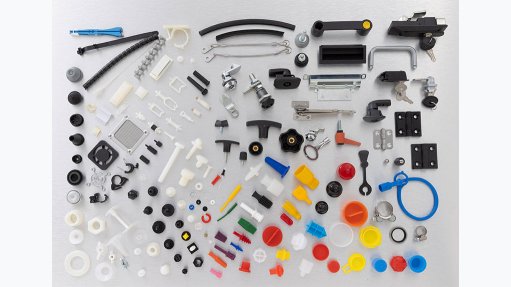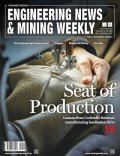WearCheck Technical Bulletin 91 – Sliding through time Part 4 of 4
This article has been supplied.
( Virtual Showroom )In part three of Lubrication from Stone Age to Modern Age (Technical Bulletin 90), we glided through a mere 20 years of fascinating lubrication history and left off towards the final years of the roaring twenties.
So much had already happened in those early years of the new century. After all, we were still recovering from the aftermath of the Great War and the Spanish flu, but things were looking up. Industrialisation and urbanisation had become defining features of the modern world, and the early 1930s beckoned with promises of restoration and stability, and that’s where we pick up our story.
EARLY 20TH CENTURY (THE AGE OF CRISIS)
1929 – 1945 CE
Historical context: fuelled by scientific discoveries and war-time necessity, the early decades of the 20th century witnessed unprecedented advancements in industries such as manufacturing, transportation, and communication. Factories proliferated, producing goods ranging from cars to banana cream Twinkies and, in the skies, pioneering aviators like Howard Hughes and Wiley Post were breaking records, and influencing the course of aviation history.
Honourable mentions from this time period include the discovery of nuclear fission, the neutron, Plutonium and the Big Bang Theory.
As for Inventions, there were plenty, including Teflon, the jet engine, the ballpoint pen, radar, the electron microscope, silly putty, the radio telescope, superglue, Nylon, freeze-dried coffee, scotch tape, the slinky and the atomic bomb.
This time period gave us a star-studded cast of brilliant people in the science and engineering arena, with guest appearances by Werner Heisenberg, Alan Turing, Robert Oppenheimer, Enrico Fermi, Edwin Hubble and Guglielmo Marconi.
This was also a time of great cultural expression and creativity. On canvas, we had Salvador Dalí, on film, Clark Gable, on vinyl, Billy Holiday and on the page, Ernest Hemingway, the stoic American novelist who nicked a urinal from his favourite bar and coined the phrase “I drink to make other people more interesting”.
1929 CE
Oscar Ulysses Zerkowitz was a Hungarian immigrant and prolific inventor, with an estimated 300 patents for inventions that ranged from quick-freezing ice-cube trays to splatter-proof nail brushes.
In 1929, Oscar registered a patent for an invention that would take the lubrication world by storm – a simple threaded grease fitting that could be attached to various types of machinery. The Zerk fitting, or nipple, as it became known, featured a spring-loaded ball bearing that, when pressed with a grease gun, allowed grease to flow into the machine's moving parts. The grease nipple has changed little over the past century, which is a testament to its original design and the eccentric Hungarian who invented it. Szép munka, Zerkowitz úr! (Nice job, Mr Zerkowitz!)
Still in 1929 CE
Being ahead of your time doesn’t always pay off, as was the case in 1929, when Standard Oil of Indiana attempted to commercialise synthetic oils. Not surprisingly, there was a lack of demand for the new product, given the abundance of crude oil, so the first marketplace introduction of synthetic lubricants was a dismal failure. However, that didn’t stop Standard Oil researcher Frederick. W. Sullivan from publishing a paper in 1931 that disclosed the process for the polymerisation of olefins to form lubricants and fuels, a move that was, controversially, believed to have assisted the development of the German synthetic oil industry during WWII.
1938 CE
One day in April 1938, Dr Roy J. Plunkett, an American research chemist working for the DuPont company in New Jersey, made one of the most accidental and impactful discoveries in the history of materials science. While experimenting with the synthesis of new refrigerants, specifically tetrafluoroethylene (TFE), he discovered that the gas inside a pressurised container had polymerised into a solid white powder-like substance to form polytetrafluoroethylene (PTFE).
Further research and development revealed its remarkable properties, including its extremely low coefficient of friction, high heat resistance, chemical inertness, and nonstick characteristics. In 1941 DuPont patented PTFE under the brand name Teflon. This accidental discovery would go on to become widely used in various industrial and consumer applications, including nonstick cookware, electrical insulation, gaskets and as a solid lubricant or colloidal additive. Plunkett’s discovery stands as a testament to the unpredictable nature of scientific breakthroughs.
1939 CE
Perhaps more than any other modern conflict, World War II (WWII) highlighted the crucial role of petroleum in achieving and maintaining military superiority on the battlefields, across the oceans, and in the air.
War machines - fighter planes, bombers, tanks, battleships and submarines - all run on oil, and so each nation’s wartime strategy was heavily influenced by its availability, quality and efforts to secure more of it. Ultimately, controlling oil supplies meant controlling the war. Here’s the story of how advancements in lubricant technology shaped the world’s bloodiest conflict.
Even though research into petroleum alternatives had started long before Nazi Germany invaded Poland in 1939, the first real-world trial for these synthetic lubricants took place during WWII, when both German and US forces began using synthetic base oils in their aircraft engines.
On the Allied front, synthetic oils were being made from polyalkylene glycol derivatives in America by the Union Carbide and Chemical Corporation – a major American chemical company that supplied the Allied war effort with essential materials and technology for the production of weapons, munitions, and other military equipment.
Their synthetic oil, Ucon EB-550, was trialled in Alaska to gauge its cold-weather performance in piston engines that powered aircraft like the P-47 Thunderbolt, P-38 Lightning, and the deadliest American fighter plane during WWII – the legendary and oh so cool, P51 Mustang.
Despite its advantages in cold-weather starting, it was not approved by military air services because it couldn't keep lead compounds (from tetraethyl lead in the fuel) in suspension, causing engine deposits and valve sticking. Additionally, it was believed to offer less anti-corrosion protection by cleaning away old lacquer deposits, which were believed to offer some protection against fuel and moisture corrosion.
Now, to the other side.
“To fight, we must have oil for our machine” ~Adolf Hitler
In 1925, a mega merger between several of Germany’s leading chemical companies resulted in the birth of the largest chemical conglomerate in the world, IG Farben. The brainchild of Carl Bosch, the distinguished German chemist who co-developed the Haber-Bosch process, the merger aimed to support Germany’s industrial rebirth by increasing operational efficiency and rationalising production. Boasting no fewer than three Nobel Prize winners, IG Farben became home to an innovative think-tank of scientists in the chemical and pharmaceutical fields.
IG Farben argued that leveraging hydrogenation technology to produce large quantities of synthetic fuels and oils from coal, could reduce Germany’s dependence on foreign oil and alleviate pressures on foreign exchange, and so just two years after its inception, IG Farben entered the realm of synthetic petroleum production, establishing its first processing plant at Leuna in eastern Germany.
Eager to make the Third Reich less reliant on oil imports, Hitler signed an agreement with IG Farben to subsidise synthetic oil and fuel production on a large scale in 1933, the year the Nazis came to power. In 1936, anticipating war by 1940, Hitler increased these subsidies, leading to the establishment of 14 more hydrogenation plants. By then, IG Farben had become thoroughly Nazified, purging all Jewish officials from its upper ranks, including its founder and chairman Carl Bosch.
When Germany invaded Poland on the 1st of September 1939, these plants were producing over 72,000 barrels of synthetic oil per day. With its monopoly on critical wartime products and extensive global business interests, IG Farben became one of the most powerful companies in the world during WWII and an integral part of the Third Reich’s power structure, earning it the notorious moniker “Hell’s Cartel.” IG Farben's aggressive development of synthetic fuels and lubricants was essential in allowing the Reich to continue waging war long after the Allied blockade cut off crude-oil imports to Germany.
One example of this aggressive development was the work of Dr Hermann Zorn, a lubricant researcher at IG Farben. During the early days of IG Farben, Dr Zorn began developing lubricants with all the favourable qualities of petroleum-based oils, but without the tendency to gel or gum in high-temperature applications like aero-engines. This led to the evaluation of numerous synthetic-base-oil chemistries derived from coal and biobased sources using Fischer-Tropsch synthesis and Bergius hydrogenation processes. By the mid-1940s, Dr Zorn's efforts had produced over 3,500 blends of esters, including diesters and polyolesters, for the German war machine.
These synthetic base oils were used to formulate aviation-engine lubricants known as "Hochtemperaturöl" (high-temperature oil), capable of withstanding the extreme conditions of high-performance engines. This oil was used in iconic aircraft such as the Messerschmitt Bf 109, the backbone of the Luftwaffe; the Focke-Wulf Fw 190, also known as the Würger (German for Butcher Bird); and the devastating Junkers Ju 87 (Stuka). Notorious for its Jericho trumpet siren, which created a terrifying sound during dives, the Stuka was also the aircraft of choice for Colonel Hans-Ulrich Rudel— the most decorated German combat pilot of WWII. Rudel flew over 2,000 missions and destroyed more than 500 Soviet tanks with his cannon-equipped Stuka, earning him the nickname "The Eagle of the Eastern Front."
Short detour for an anecdote:
Upon learning of the war’s end on May 8, 1945, Rudel radioed the US Tactical Air Command to surrender and was directed to Kitzingen airfield, now held by the Allies and home to the Ninth Air Force’s 405th Fighter Group. However, due to a victory parade that was in progress, the 405th Group did not receive the message about the incoming Luftwaffe aircraft.
Picture it, 2,500 air force men in dress uniform all lined up in front of the hangars waiting for squadron of P-47D Thunderbolts to do a victory flyover and who should pitch up but Rudel accompanied by six other Stukas and Fw190s. As the surrendering Germans flew into the airbase, they were so low to the ground that the Americans could see the pilots’ faces and insignia.
After crash-lading their planes, Rudel and company surrendered, but Rudel - upon seeing the 405th Fighter group in formation - assumed the parade was in his honour and so graciously thanked the 405th squadron commander and remarked that it was the best-looking formation he had ever seen, all while the stunned airmen watched in amazement. You can’t make this stuff up.
Back to the war. Remarkably, it wasn’t until May 1944 that Allied bombers began targeting Germany's synthetic-oil industry, with concentrated attacks on production facilities like IG Farben’s major processing plant at Leuna.
A willing collaborator with the Nazi SS, IG Farben operated several synthetic fuel and rubber plants adjacent to concentration camps, including Auschwitz,
Monowitz, Buchenwald, and Mauthausen. Here, concentration camp inmates and prisoners of war were subjected to forced labour to support the company’s industrial operations.
Originally intended as a pesticide, Zyklon B was repurposed as a lethal gas used to exterminate over one million people in the Auschwitz gas chambers during the Holocaust. Produced by Degesch, a subsidiary of IG Farben, Zyklon B became a symbol of the atrocities committed during the war.
For better or worse, the scientists at IG Farben were pivotal in the development of synthetic fuels, lubricants, and additives.
Based on interrogation records and declassified documents obtained by The Naval Technical Mission in Europe—an organisation established to exploit German science and technology for the benefit of the Allies—several innovative base oils, additives, and processes were developed by IG Farben. The spoils of war included additives like oxidation - and corrosion-inhibitors, extreme-pressure and anti-wear additives, pour point depressants, and viscosity index improvers.
Additionally, there were two-phase and water-soluble lubricants, as well as new synthesis processes involving olefins, ethylene polymers, low pour-point and high VI esters, and the condensation of aromatics and paraffins.
After the war, IG Farben was dismantled by the Allies, and several of its top executives were prosecuted during the Nuremberg Trials for their roles in war crimes and crimes against humanity.
“Air superiority is the ultimate expression of military power” – Winston Churchill
As the chaos of WWII ensued, technological advancements surged to meet the demands of modern warfare, with revolutionary changes in aerial technology and the rapid development of jet engines. At the onset of the war, many air forces still operated outdated biplanes. By its end, the skies were ablaze with jet-powered fighters and bombers soaring like homesick angels.
The quantum leap into the jet age occurred on July 18, 1942, with the first successful flight of the Messerschmitt Me 262. Building upon the propulsion technology demonstrated by the experimental Heinkel He 178—the first prototype aircraft to fly under jet propulsion—the Me 262 became the world's first operational jet-powered fighter aircraft. Powered by two Junkers Jumo 004 turbojet engines, the Me 262, nicknamed Schwalbe (Swallow), represented a significant advancement in aviation technology.
The pioneers behind this leap were Sir Frank Whittle and Dr Hans Joachim Pabst von Ohain. Both independently developed the first practical jet engines in the 1930s, laying the groundwork for modern jet propulsion and aviation. While Whittle is credited with conceiving the first functional jet engine, having registered a patent in 1931, Ohain’s design took to the skies first in the Heinkel He 178, just days before the outbreak of war.
Whittle’s design would be developed under license to Rolls Royce, General Electric and de Havilland, to power the Gloster Meteor, Bell P-59, Lockheed P80 and de Havilland Vampire.
While the Me 262 became a ray of hope for the German Luftwaffe, its impact on the war was limited by engine and production issues, fuel shortages, and Allied bombing campaigns. However, with a top speed of approximately 870 km/h, the Me 262 was a hard act to follow, and so Allies resorted to destroying them on the ground before they had a chance to take off.
Initially, highly refined mineral oils were used in early jet engines, like the Me 262. However, these oils could not withstand the punishingly high operating temperatures, leading to severe oxidation and viscosity issues. More capable chemistry was needed. Polyalphaolefins (PAOs) and ester-based synthetic oils soon emerged as solutions, offering better thermal stability and resistance to oxidation. By the end of WWII, these synthetic oils had largely replaced mineral-based lubricants due to their superior performance in extreme conditions.
After the war, many Me 262s were captured and studied by Allied countries, with their technology applied to new jet engines, and so - in a way - the legacy of the Me 262 endures in the jets that rule our skies today.
As for the architects of the Jet Age, Ohain was brought to the US through Operation Paperclip, a government programme to recruit German scientists after WWII. He became the chief scientist at Wright-Patterson Air Force Base. Some time later, Whittle also moved to the US, taking a position as a research professor at the US Naval Academy. Fascinated by each other’s work, Whittle and Ohain became good friends.
When WWII began, all chemistry was focused on supporting the war effort, and the development of lubricant additives became crucial for improving the durability of tactical aircraft and vehicles.
We saw the development of Zinc dialkyldithiophosphate (ZDDP), as an anti-corrosion and anti-oxidant additive, as well as Molybdenum disulfide as a solid lubricant to reduce friction.
Detergent additives, initially used in the automotive industry, migrated to aviation in the 1940s, although this was deemed problematic by the US Air Force, as these metal-containing additives (metallic salts of barium and calcium) led to ash deposits in combustion chambers and, under high oil-consumption conditions, caused pre-ignition and engine failure.
If there is one thing that history has shown us, it’s that the greatest discoveries are those that are unexpected, and those that are not always understood by the inventor themselves. This is one such story in history:
In 1936, amid escalating tensions, a small Philadelphia-based company, Rohm and Haas, founded by German chemist, Dr Otto Röhm, discovered that its parent company in Germany, Rohm AG, had created a revolutionary new light-weight shatter-resistant plastic, later known as Plexiglas®. Eager to learn more, the Philadelphia subsidiary dispatched a young chemist, Dr Donald Frederick, to Germany.
Dr Frederick was shown the new plastic, but the chemists at Rohm AG were not allowed to divulge details about the intended application of this Plexiglas® precursor – polymethyl methacrylate (PMMA), as Rohm AG was supplying the Reich with the stuff for use in the cockpits of fighter planes and bombers.
Unaware of its imminent impact on revolutionising warfare, Dr Frederick returned to Philadelphia and started preparing samples of his own, which the company began selling. Being curious creatures by nature, chemists like to experiment, and so one day, Dr Frederick replaced the methyl group with some long carbon chains and discovered that, not only was this new concoction miscible with engine oil, but the mixture remained fluid at very low temperatures. Interesting as this was, this discovery was without any apparent commercial value, and so a patent was filed without any expectation that the company would derive any financial benefit.
At the onset of WWII, the United States government implemented a policy to scrutinise all filed patents for potential contributions to the war effort. Among these, the Rohm and Haas patent stood out, identified as potentially valuable for combat vehicles operating in extreme low-temperature conditions—an environment likely to be encountered in battles between the Germans and the Russians.
The US military shared the Rohm and Haas patent with the Russians, who added the polymer to the engine oils of their T-34 and T-60 tanks. This proved strategic during Operation Barbarossa and the siege of Stalingrad, when temperatures dropped below -20⁰C. German equipment malfunctioned as their lubricants became too viscous, forcing Panzer regiments to light fires under engines to start their vehicles. This crucial difference in engine oil fluidity significantly contributed to the defeat of Nazi forces.
“There is no such thing as a failed experiment, only experiments with unexpected outcomes” ~ R. Buckminster Fuller
1945 - 2000 CE (CONTEMPORARY HISTORY AKA THE ATOMIC AGE, AKA THE SPACE AGE)
Historical context - the Holocaust and the devastating nuclear fallout from the deployment of the world’s first atomic bombs on Hiroshima and Nagasaki became profound symbols of the human cost of war. Yet, amid the destruction, we did what humans do best, we picked up the pieces and we started to rebuild our world.
The post-war period heralded the golden age of capitalism and the baby boom. We saw the rise of suburbanisation and the middle class, as economies worldwide recovered. In the coming years, the geopolitical landscape would be dominated by the Cold War between the United States and the Soviet Union, leading to an arms race, space race, and numerous proxy wars. This era also saw a cultural shift with the rise of civil rights movements and pop culture.
Honourable mentions from this time period include the discovery of the DNA Structure, Pulsars and Quasars, the Higgs Boson and gravitational waves. We also transplant a human heart and clone a sheep.
Our inventions inventory included the microwave oven, transistor, Laser, microprocessor, personal computer, MRI technology, the hydrogen bomb, communication satellites, the Polaroid camera, the polio vaccine, the world wide web, GPS and Bluetooth technology, the mobile phone and the pet rock.
Guest appearances include Rosalind Franklin, James Watson, Peter Higgs, Vint Cerf, Richard Feynman, Stephen Hawking and Neil Armstrong – the first guy to walk on the moon. Or did he?
1951-ish CE
The fabulous fifties may have introduced us to Elvis and Johnny Cash, but they also brought us the first multigrade engine oils thanks to viscosity index improvers like polymethacrylates (PMA). Early multigrades, like SAE 10W-30 oils, met the low-temperature engine-cranking viscosity requirements of an SAE 10W grade and the high-temperature oil-circulation viscosity requirements of an SAE 30 grade. This was a significant advancement in automotive lubricant technology, as these oils could perform consistently over a wide temperature range, eliminating the need for different engine oils in summer and winter.
Oil companies around the world were pushing out multigrades fast and furiously. There was the BP-controlled Price’s Lubricants Ltd with Energol in 1951 (later rebranded to BP Energol), Jersey Standard Oil (Esso) in 1952 with Uniflo, and in 1953, Chevron, under the Caltex brand, launched Delo RPM Supercharged-3 and Motul launched Motul Century. Many more would follow.
1966 CE
In 1964, at the request of the British government, Peter Jost created and headed a committee of twelve leading experts from industry and academia to evaluate the state of lubrication education and research, and to develop recommendations for advancing the field. The committee soon realised that the term 'lubrication’ was too restrictive and would prevent many from fully appreciating the broader economic and technological significance of their work.
After much debate, the committee settled on the prefix “tribo” derived from the Greek word "tribos," meaning to rub. Armed with this prefix, Jost conferred with the renowned lexicographer and editor of the Oxford English dictionary, Robert Burchfield, who gave his blessing, and so a new word and engineering discipline was born – tribology – the scientific study of friction, wear, and lubrication between interacting surfaces in relative motion.
In March of 1996, when the aptly named Jost report was published by the British government, the term ‘tribology’ was officially used for the first time to describe this multidisciplinary field.
In this landmark document, the committee demonstrated that the challenges of lubrication in engineering were primarily design problems. Jost argued that addressing these issues required a broad range of skills from scientific disciplines beyond mechanical engineering, including chemistry, materials science, solid mechanics, and physics. Moreover, Jost and his team calculated that applying tribology to machine design could save the British industry £500 million per year by preventing breakdowns, lowering energy use, reducing maintenance expenses, and increasing the longevity of machines.
Throughout his distinguished career Jost, the father of tribology, worked tirelessly to bring the gospel of tribology to the masses, always stressing the importance of the discipline on the economy and society.
1970s CE
The 1970s were marked by significant oil crises, first with the OPEC oil embargo in 1973 and then the Iranian Revolution in 1979, which disrupted global oil supplies and underscored the vulnerabilities of oil-dependent economies. However, it wasn’t all doom and gloom in the oil world, as base-oil refining technologies were evolving, and new ways of delivering better lubricants more efficiently were being developed.
Hydrocracking, which combines catalytic cracking and hydrogenation, became common, leading to the production of Group II base oils with better stability and low-temperature performance than Group I base oils. Concurrently, catalytic dewaxing was developed as an alternative to solvent dewaxing, removing wax by cracking paraffins and waxy side chains into lighter hydrocarbons.
The oil crisis also accelerated the development of synthetic oils. In 1971, French company Motul introduced an ester-based synthetic oil for automobiles. They were followed by AMSOIL in 1972, which launched the first API-approved synthetic engine oil, earning the US trademark "The First in Synthetics". Mobil then released Mobil 1 in 1974, which claimed to reduce petrol consumption by 5% compared to conventional oils. With rising oil prices and a growing demand for fuel-efficient vehicles, this was a highly attractive proposition. After decades of false starts, synthetics had finally taken off!
Finally, in 1975, the International Standards Organisation (ISO), in collaboration with other standards organisations, introduced the ISO Viscosity Grade (ISO VG) system. This system was designed to standardise viscosity values in centistokes (cSt) at 40°C across 20 grades, ranging from 2 cSt to 3200 cSt, with each grade designated by its midpoint kinematic viscosity.
1993 CE
Three noteworthy events occurred in 1993. The first episode of X-files premiered on TVs across South Africa, immersing viewers in a world of extraterrestrials, cryptids, and government conspiracies. “The truth is out there.'"
In other news, the American Petroleum Institute (API) introduced a base oil classification system that organised base oils into five groups (Group I through V) based on their refining techniques and performance characteristics. Group I to III were classified as mineral oils, Group IV was synthetic polyalphaolefins (PAOs), and Group V included any other base oils that did not fall into the prior categories. We now had a clear and standardised evaluation method for base oils—or so we thought.
In the same year, Chevron launched a selective wax isomerisation process known as Isodewaxing®, which allowed for the large-scale, cost-effective production of high-quality Group III base oils that closely match the performance of Group IV PAO synthetic base oils.
1999 CE
It was 1999 and we were trying to remain calm at the prospect of the Y2K (year 2000) bug resetting every computer clock back a century at the stroke of midnight on New Year's Eve.
In April, of the same year, in a building on 36th Street in Manhattan, New York, a landmark ruling had been made that would forever change the term “synthetic” in the lubricant world.
Let me set the stage for you to appreciate, fully, the gravity of the situation.
The concept behind synthetic lubricants was an elegant one: rather than relying on the crude-derived mix of dissimilar hydrocarbon molecules, why not create the perfect base stock from scratch in a laboratory? For polyalphaolefin (PAO) base oils, this process starts with a simple two-carbon molecule, like ethylene gas, which is polymerised into longer-chain alpha-olefins and then chemically combined to form long-chain hydrocarbons, resulting in PAO synthetic base oils.
Historically, it was widely accepted that only Group IV base oils made from PAOs were true synthetics. However, the definition of what constituted a synthetic oil remained unclear, leaving much responsibility to base-oil manufacturers and lubricant marketers. This ambiguity came to a head in the early 1990s when the lubricants industry pushed the API and the SAE to establish an official definition for synthetic lubricants. The debate focused on the development of Group III hydroisomerised base oils, which, some argued, provided similar properties to PAOs, but were cheaper to produce.
In 1995, the SAE, unable to resolve the debate, removed references to "synthetics" from its terminology and classification standards. The API followed suit, eliminating references to "synthetic" from its Engine Oil Licensing and Certification System (EOLCS) after a lawsuit from Castrol in 1997 claimed that the API's use of the term discriminated against Group III base oils. With no official definition of what does or does not constitute a synthetic oil, the playing field was left wide open for a new interpretation.
So, with that in mind, here are the juicy details of the David and Goliath bun fight that turned the lubricant industry on its head.
In the blue corner, weighing in at a market value of $8bn - the undisputed world champion of synthetic oils, Mobil Oil Corporation; and in the green corner, weighing in at a market value of $4,7bn, the challenger – Castrol. Let's Get Ready to Rumble!
Late in 1997, Castrol changed the formula of its Syntec® engine oil, swapping out the PAO base stock and replacing it with a hydroisomerised Group III petroleum base stock, but they were still marketing Syntec as a synthetic oil.
When Mobil got wind of this, they had samples of this new formulation tested by an independent laboratory who confirmed that indeed Castrol’s ‘full synthetic motor oil’ contained 100% mineral oil.
To make matters worse Castrol had embarked on a provocative TV advertising campaign in which they claimed that Syntec’s unique molecular structure bonded to engine parts and provided superior engine protection to all other engine oils, both synthetic and mineral.
At the time, Mobil was a prominent supplier of PAO base stocks to other lubricant brands, like, you guessed it, Castrol, but they were also the makers of Mobil 1 – The World’s leading synthetic engine oil. Needless to say, Mobil cried foul and took their complaint to the National Advertising Division (NAD) of the Council of Better Business Bureaus, that arbitrates advertising disputes of this nature in the US.
Mobil charged that the advertisements inaccurately represented the current formulation of Syntec as synthetic and in so doing mislead consumers. They also argued that Castrol’s marketing campaign led consumers to believe that all Syntec products were synthetic.
The dispute before the NAD pussyfooted around the obvious questions of product performance and consumer value, plunging instead into deep semantics.
Mobil contended that true synthetics had to be formulated from small molecules subject to a chemical reaction, not built from natural petroleum. Castrol, on the other hand, held to a looser description, defining synthetic as the product of an intended chemical reaction.
Castrol went on to defend its claim that Syntec was synthetic based on the nature of the hydroisomerised base stock used in its formulation, which was produced by Shell, who also marketed their product as synthetic in over 30 countries, including the United States.
In a final blow, Castrol asserted that Mobil's real interest was in protecting its market dominance and also pointed out that Mobil, through an alliance with British Petroleum, had itself marketed industrial oils made from hydroisomerised base stocks as ‘fully synthetic’ in Europe and elsewhere. Ooh, busted!
And so, this battle of definitions ensued, with both sides calling on the testimony of industry experts and even Nobel Laureates to champion their cause and substantiate their claims. In the end, the NAD reached one of its most far-reaching decisions ever.
They ruled that the overwhelming evidence presented by Castrol constituted a reasonable basis for the claim that Syntec was a synthetic engine oil and that the word "synthetic" was a marketing term that referred to properties, not to production methods or ingredients.
The NAD went on to state that both Mobil 1 and Castrol Syntec had near identical performance characteristics, despite their differing base stocks and that Syntec was technically synthesised from crude oil because its molecular arrangement was unnatural and a byproduct of an intended chemical reaction.
Lastly, the NAD referenced the actions taken by the SAE and API, to reject a restrictive definition of the term synthetic, as a supporting factor in their decision favouring Castrol.
Shortly after Mobil lost its case, many oil companies started reformulating their synthetic oils with Group III base stocks instead of PAOs.
I guess Shakespeare was wrong when he wrote “What's in a name? That which we call a rose by any other name would smell as sweet” – Romeo and Juliet. And that’s how it went down - for never was a story of more woe, than this of Group III vs PAO.
Epilogue
There you have it, folks— a glimpse into five thousand years of lubrication history.
From the rudimentary use of natural oils and fats to the highly sophisticated lubricants of today, the journey of lubrication is a fascinating testament to human ingenuity and the pursuit of efficiency.
The lubricants we use in our everyday lives are the culmination of the work of inventors, scientists, entrepreneurs, and pioneers in industry who, over the ages, have made significant discoveries and contributions to the development of lubricants and the science of tribology.
This chronicle celebrates remarkable individuals like Da Vinci, Newton, Amontons, Gesner, Drake, Ellis, Rockefeller, Fridel, Craft, Reynolds, Wakefield, Bergius, Fischer, Zorn, Jost, and many more who embodied the spirit of scientific progress. But ultimately, this is the story of us and how a simple substance, oil, has propelled civilisation.
The spirit of scientific progress was perfectly captured by Sir Isaac Newton in a letter to a fellow scientist, Robert Hooke, in 1675, when he famously wrote, “If I have seen further than others, it is by standing on the shoulders of giants.” This was the story of those giants.
Article Enquiry
Email Article
Save Article
Feedback
To advertise email advertising@creamermedia.co.za or click here
Comments
Announcements
What's On
Subscribe to improve your user experience...
Option 1 (equivalent of R125 a month):
Receive a weekly copy of Creamer Media's Engineering News & Mining Weekly magazine
(print copy for those in South Africa and e-magazine for those outside of South Africa)
Receive daily email newsletters
Access to full search results
Access archive of magazine back copies
Access to Projects in Progress
Access to ONE Research Report of your choice in PDF format
Option 2 (equivalent of R375 a month):
All benefits from Option 1
PLUS
Access to Creamer Media's Research Channel Africa for ALL Research Reports, in PDF format, on various industrial and mining sectors
including Electricity; Water; Energy Transition; Hydrogen; Roads, Rail and Ports; Coal; Gold; Platinum; Battery Metals; etc.
Already a subscriber?
Forgotten your password?
Receive weekly copy of Creamer Media's Engineering News & Mining Weekly magazine (print copy for those in South Africa and e-magazine for those outside of South Africa)
➕
Recieve daily email newsletters
➕
Access to full search results
➕
Access archive of magazine back copies
➕
Access to Projects in Progress
➕
Access to ONE Research Report of your choice in PDF format
RESEARCH CHANNEL AFRICA
R4500 (equivalent of R375 a month)
SUBSCRIBEAll benefits from Option 1
➕
Access to Creamer Media's Research Channel Africa for ALL Research Reports on various industrial and mining sectors, in PDF format, including on:
Electricity
➕
Water
➕
Energy Transition
➕
Hydrogen
➕
Roads, Rail and Ports
➕
Coal
➕
Gold
➕
Platinum
➕
Battery Metals
➕
etc.
Receive all benefits from Option 1 or Option 2 delivered to numerous people at your company
➕
Multiple User names and Passwords for simultaneous log-ins
➕
Intranet integration access to all in your organisation

















